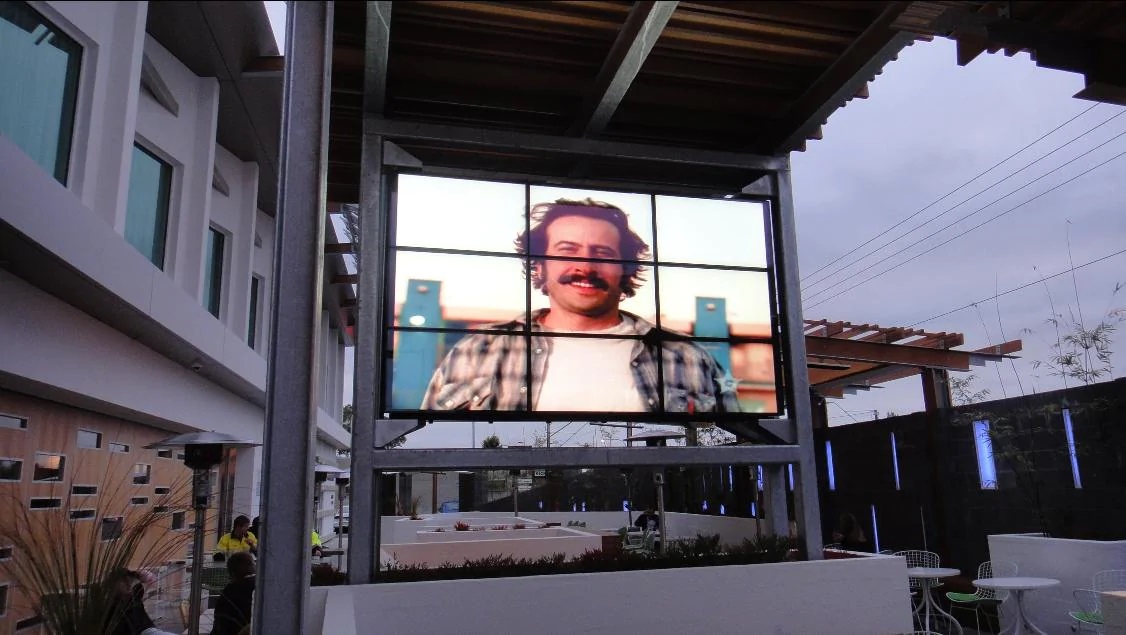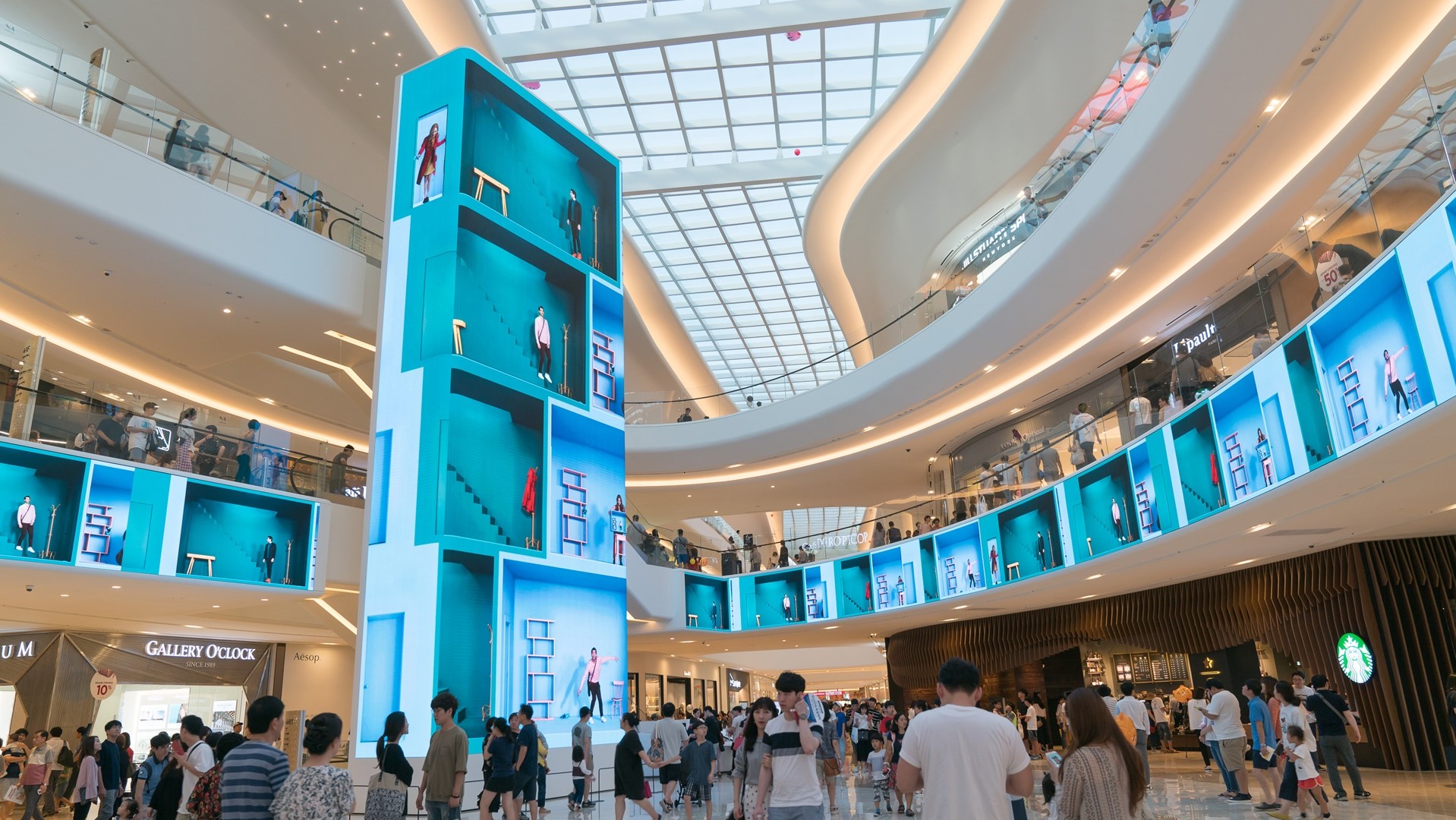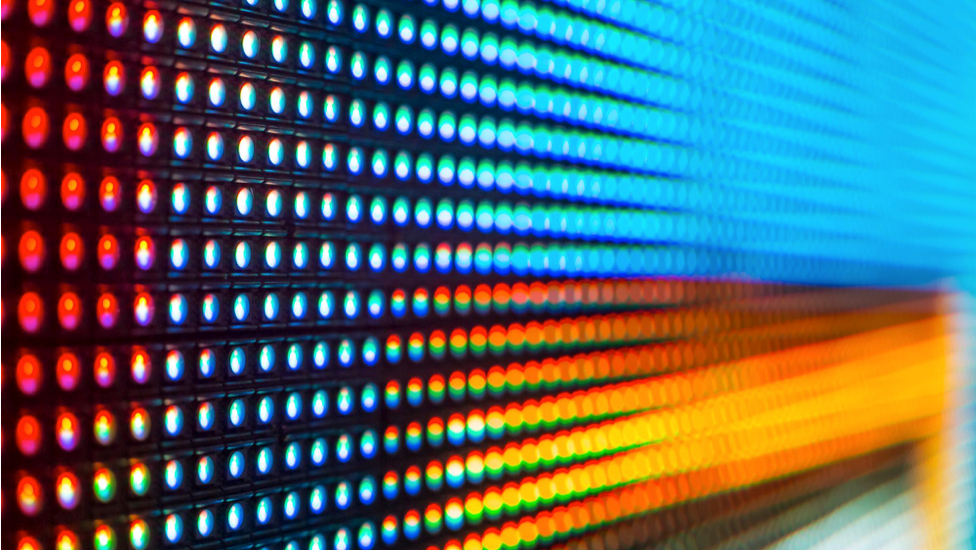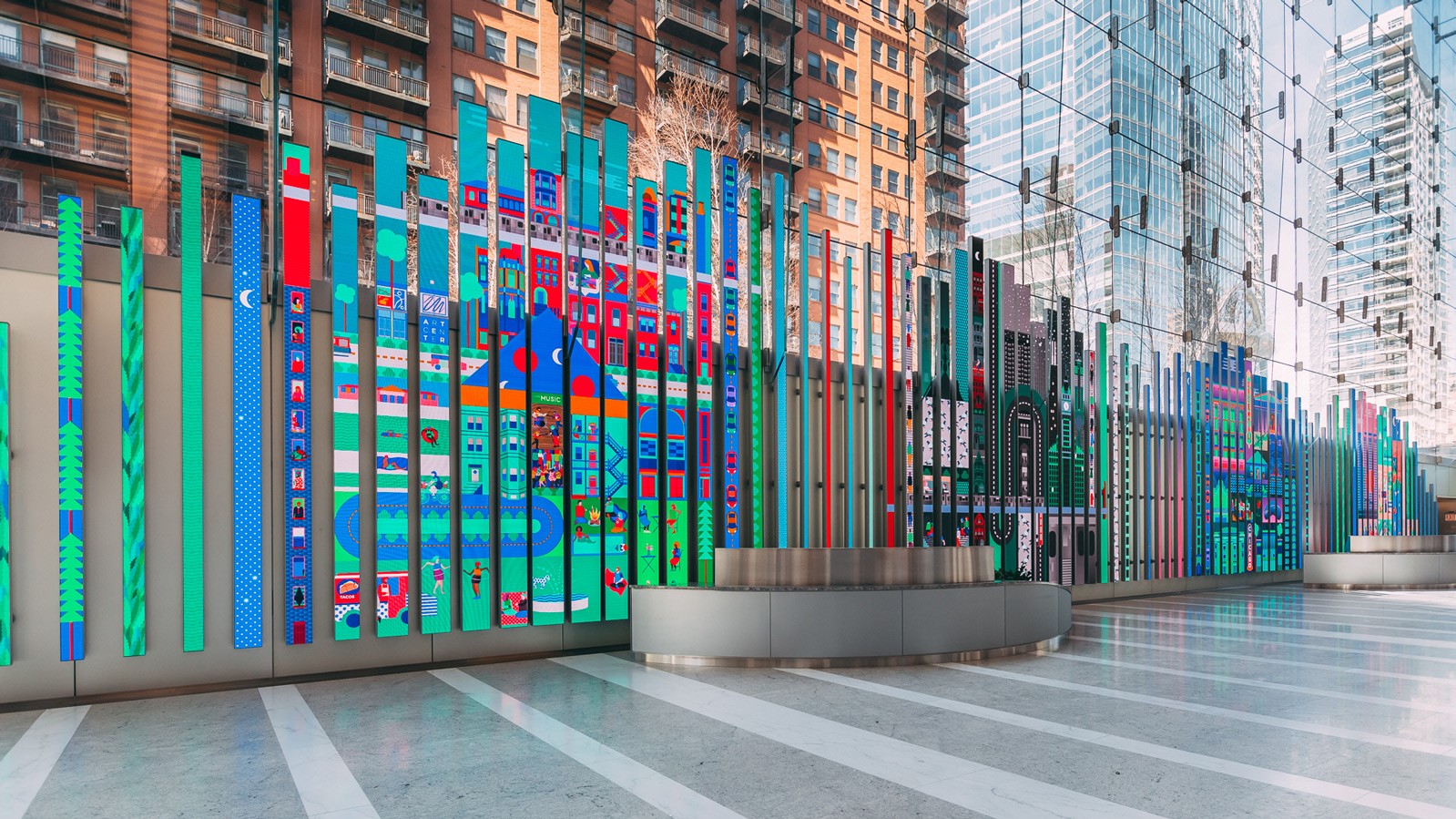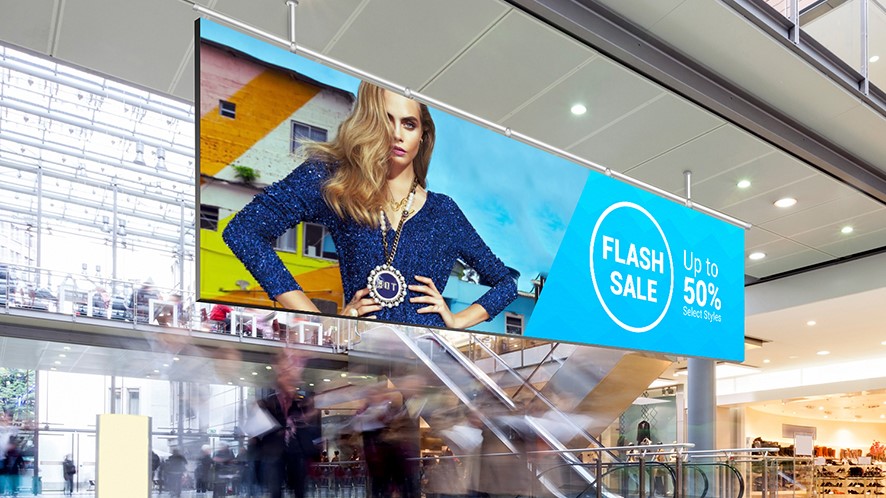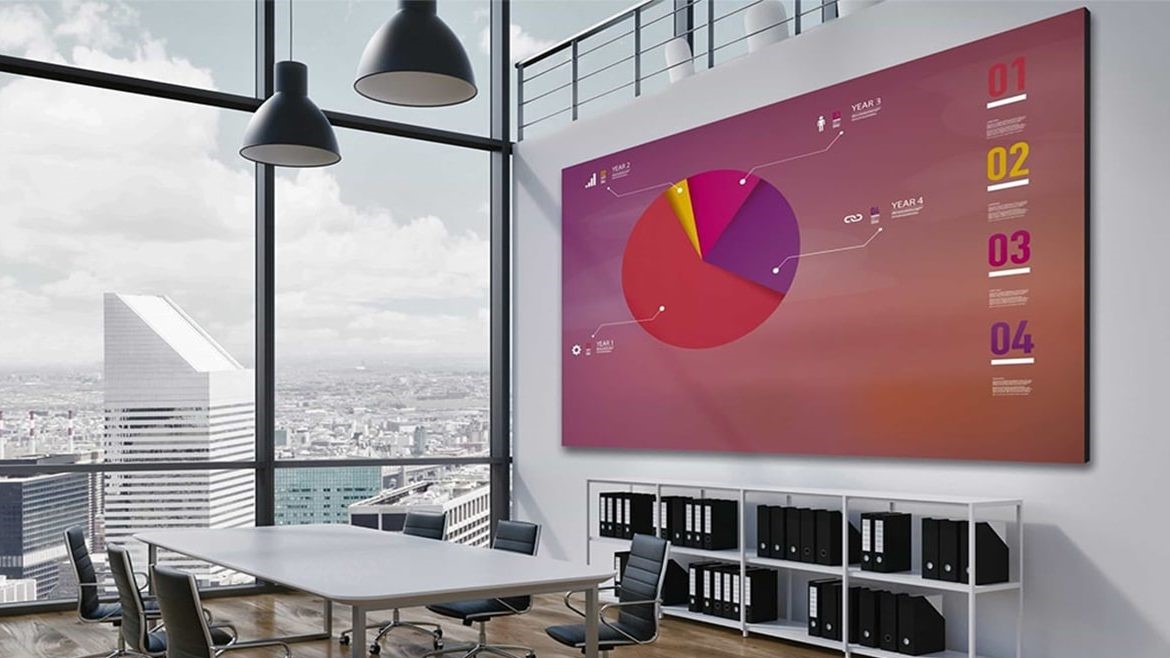Take Care Of Video Walls in Summer
Audiences enjoy the warmer weather.
With the summertime comes brighter sunshine, higher temperatures, and longer days, each of which will impact display performance. Prudent display owners will prepare for these changes. Summertime also changes priorities not just for your audiences but perhaps for your content creators as well. Once again, prudent video wall owners will prepare for this.
Brightness Has Consequences
During summer, sunshine is both brighter and longer lasting, exposing your outdoor display to consistently higher levels of ambient light. As the brightness level of your environment rises, so too must the brightness of your content. Hopefully your display is already synced to an ambient light sensor that will adjust content brightness as surrounding light levels shift, but if it isn’t, now would be a great time to integrate something like that. How sunlight reflects off an outdoor display is largely dependent on the material used to fill space between diodes. Using a black rubbery material is one of the least reflective options, so in the summer time it is usually your best bet. NanoLumens uses this type of material in all our products but others may go a different route. Regardless of which manufacturer you used, this is a variable worth checking on because the reflectivity of light off your display impacts the brightness level at which you’ll need to run it. Increased brightness will have an impact on grayscale quality, heat output, and energy usage, among other things. While running a display at a higher level of brightness can actually improve grayscale quality and heat output efficiency, it can increase overall energy usage which itself then raises its own heat output.
Temperatures Impact Diode Performance
Outdoor or open air displays like those at sports stadiums are of course subject to the temperatures of the surrounding air. The outdoor temperatures can reach 45-60 degrees celsius. Extreme summer temperatures like this can have a negative impact on diode lifespan and performance, which are affected at the device level, not so much at the design or implementation level. That means pretty much every outdoor LED display will encounter lifespan reduction and color alteration issues when exposed to summer heat, so display owners should take measures to prepare for these challenges. While there’s not much a display owner can do about the lifespan of their diodes (beyond buying higher quality, longer lasting diodes to begin with), display owners may want to adjust their display calibration in anticipation of their colors shifting as temperatures shift. All that being said, these issues are extremely minor, so while worth thinking about, they shouldn’t cause much worry and audiences likely won’t even notice.
Longer Days – More On-Time
The sun is not only hotter and brighter in the summer but it is out longer as well. While winter days go dark by 5:00 or 6:00 PM in many places, the summers see those days extended by at least a few hours. Audiences will take advantage of the extra sunshine by staying out longer. This is great news for advertisers looking to maximize exposure but it means they need to prepare even more content and increase the amount of time their display is working. Display owners will need to know how much ad space time they can actually sell and they should know how much longer they’ll want to extend their display’s on-time. This lengthened on-time will probably increase energy usage as well, and thus heat output and energy costs as a result.
Create Contents For Audiences
The summers are often when people take vacation, content creators included. Smart video wall owners will create a healthy backlog of content to prepare for the short-term absence of the people who create it, whether they be in-house, freelance, or part of a separate outfit. One way to navigate around the reduced influx of fresh content is to invite your audiences to take part in your content creation themselves. Introduce interactive features that audiences can engage with directly, either through touch-screen functionality, through smartphones, or with cameras showing off audience members themselves.
Contrast Is Recommended
In the digital display industry, brightness is frequently measured in “nits,” with one nit being equivalent to one candela per square meter. We could spend all day diving into what that means, but for now just understand that during most of the day sunlight reflects off outdoor displays at around 2,200 nits. To overcome this reflective light from the sun, we recommend operating a display at four times the level of nits present from ambient reflective light, regardless of where the display is located. The levels of reflective sunlight hitting an indoor display will be significantly smaller than 2,200 nits as light is filtered through windows but the goal of hitting a 4:1 contrast ratio remains. This ratio will allow the light from your display content to outshine the glare of ambient light to deliver audiences a clear picture. This lets displays operate at reduced brightness levels while still maintaining that 4:1 contrast ratio, thus allowing for lower energy usage and longer lifetimes for pixels.
Use Sensors Display As Ambient Light Changes
To accommodate for changing light levels throughout the day, ambient light sensors in all of our outdoor or outdoor facing displays. These sensors measure the presence of ambient light and forward that information to the display management platform, which correspondingly adjusts the brightness levels of the display. Though the reflective light from the sun hits the display with fewer nits than it would a fully outdoor display, ambient light levels fluctuate dramatically as the sun moves through the sky and rays bounce off adjacent buildings. Despite this challenge, the self-adjusting display has proven so successful in reinvigorating the surrounding communal area.
We’d love To Meet You In Person Or Via The Web!
Main Office: Suite M-01, 512, 3rd Street, Abu Dhabi, UAE
Phone: + 971 2 6767019
WhatsApp: + 971 55 3979668
Email: web@OfficePlusUAE.com

